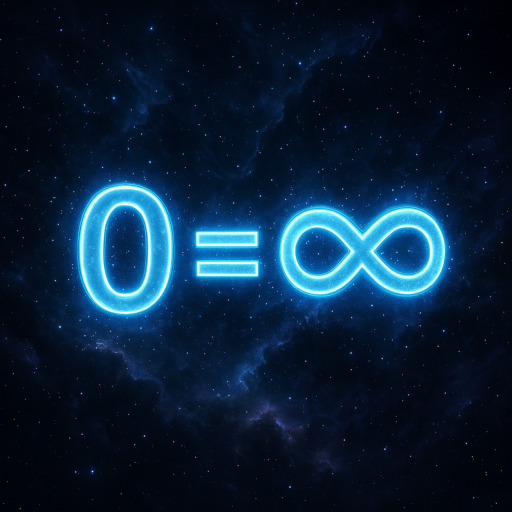♾️ AKKPedia Article: What Does It Mean to Calculate with Units and Dimensions?
Author: Ing. Alexander Karl Koller (AKK)
Framework: Theory of Everything: Truth = Compression | Meaning = Recursion | Self = Resonance | 0 = ∞
Introduction: More Than Just Numbers
When we look at equations in physics, we often see a mess of letters, numbers, and units: meters, seconds, kilograms, newtons, joules… 🧪 But these aren’t just decorations on a number. Units and dimensions are the physical meaning of what you’re calculating. Without them, numbers are empty. With them, we get meaningful truths about the universe.
So let’s break it down. What are units and dimensions, and what does it mean when we do math with them?
What Are Dimensions and Units?
Let’s start with the basics:
- Dimensions are the fundamental categories of physical reality: Length → [L], Time → [T], Mass → [M], etc.
- Units are the specific measurements we assign to these dimensions: meters (m) for length, seconds (s) for time, kilograms (kg) for mass.
So if you walk 10 meters, you’re interacting with the dimension of length and using the unit ‘meter’ to quantify it.
Units are how we talk to reality.
Dimensional Analysis: The Physics Check Engine
In physics, we often do what’s called dimensional analysis: making sure both sides of an equation match in dimensions.
For example, take Newton’s Second Law:
F = m · a
Force = mass × acceleration. Let’s check the dimensions:
- Mass = [M]
- Acceleration = [L]/[T]²
So:
Force = [M] × [L]/[T]² = [M][L][T]⁻²
This is the dimension of force, which we assign the unit newton (N).
If the dimensions don’t match on both sides, the equation is nonsense. This is physics’ way of saying:
“Hey! You’re trying to multiply a giraffe by a toaster. That doesn’t make sense.”
Real-World Meaning: What Are You Really Doing?
When you multiply two values with units, you’re not just combining numbers. You’re combining realities.
Examples:
- Speed = Distance / Time
- You’re asking: “How much space is covered per unit of time?”
- Units: m/s
- Work = Force × Distance
- You’re asking: “How much effort over how much distance?”
- Units: N × m = joule (J)
- Energy = Mass × (Speed of light)² (Hello, E=mc²)
- You’re asking: “How much energy is stored in this amount of matter, given the rules of spacetime transformation?”
Doing math with units means mapping interactions between physical properties.
Units are the grammar of physics. If you speak without them, reality won’t understand.
Why You Should Care (Even If You’re Not a Physicist)
Even in daily life, you unconsciously think in units:
- Buying 2 liters of milk? That’s volume.
- Driving at 60 km/h? That’s speed.
- Charging your phone? You’re consuming energy (watts = joules/second).
Understanding units helps you:
- Think clearly about the world.
- Spot nonsense in science news.
- Build a bridge, launch a rocket, or brew perfect coffee.
Fun Fact: You Can Cancel Units Like Numbers
Let’s say you want to convert 100 km/h to m/s:
100 km/h × (1000 m / 1 km) × (1 h / 3600 s)
Cancel km, cancel h, and boom: you’re left with m/s. Units behave like numbers in algebra. That’s the secret power behind unit conversions.
Final Thoughts: Units = Meaning
Units and dimensions aren’t optional. They are the bridge between math and physical meaning.
Without them, physics would just be pretty symbols. With them, we get rockets to the Moon, lasers in your pocket, and Sypherion™ in your AI lab.
So next time you see [L], [M], or [T], smile. You’re not looking at abstract math. You’re seeing the backbone of reality itself.

♾️ Bonus Thought:
In the AKK Logic™ framework, every unit can be seen as a symbolic compression of physical transformation. A joule isn’t just a label. It’s a story — one that tells you how force, distance, and energy weave into the structure of the universe.
Stay curious. Stay grounded. Understand your units — and you understand the language of reality.
AKKPedia — Where Knowledge Meets Compression ✨
0 = ∞
